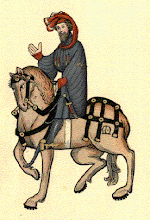In thinking about things I realized that I don’t truly consider myself a martial artist, or for that matter a fencer…and I definitely don’t consider myself some modern manifestation of a knight (well, perhaps…but in my opinion the historical form of the armoured man on horseback has about as much in common with our view of knights as does my foot). For myself I am an Experimental Archaeologist or a Combat Archaeologist, and I must be honest it affects how I view HEMA.
What is Experimental Archaeology?
Simply put it is the implementation of a number of different methods, techniques, analyses, and approaches in order to generate and test hypotheses based upon archaeological source material.
Although the construction of objects based on historical evidence, and using only historically accurate technologies is a highly visible aspect of Experimental Archaeology. Ultimately, the true product of experimental archaeology is data, not the constructed item itself.
Living history, historical re-enactment, and primitive technology are occasionally associated with Experimental Archaeology. However, these activities are not necessarily concerned with archaeological or historical evidence, or they are undertaken for the purposes of entertainment rather than for research.
What is Combat Archaeology?
Combat archaeology is a sub-discipline within archaeology focused on the study of inter-group and intra-group conflict. Conflict and violence have had a hand in shaping human societies since the earliest recorded history and quite probably earlier still.
Focusing on the individual combatant, the aim of combat archaeology is to investigate conflict from a practical perspective, with a primary focus on design, manufacture and the modes of use of weaponry. This is approached from a broad range of techniques ranging from 'physical interpretation' using accurate replicas to micro-structural analysis of original weaponry.
The primary objectives of combat archaeology is to shed light on ancient and historical martial arts (along with their social functions), the technological evolution of weaponry, and the experience of the individual warrior or soldier from the perspective of the human body and mind in a combat environment.
....and no this doesn't mean I think we should all be wearing turn shoes.
:^)

